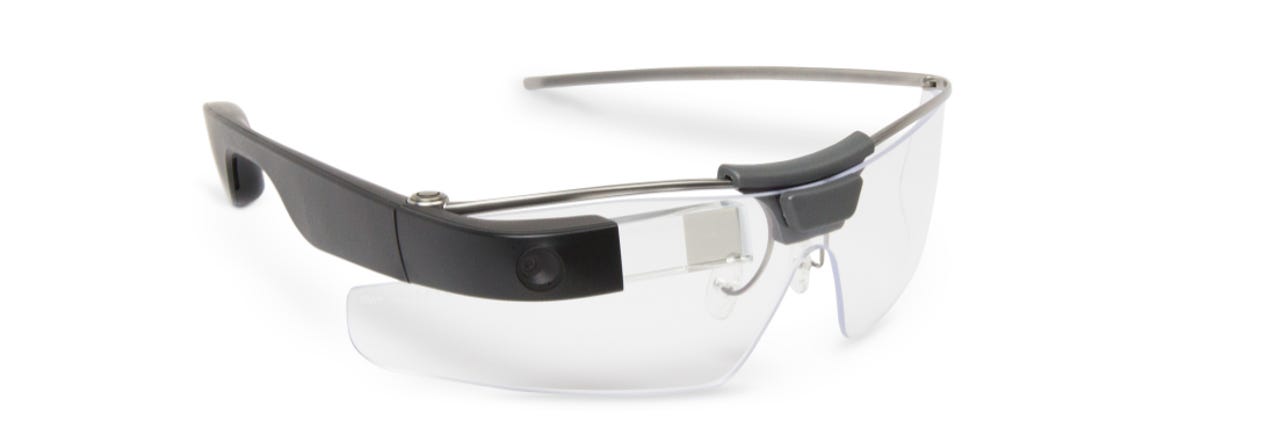With Enterprise Edition, Google Glass finds its ROI calling


Glass is back. And this time it's going to the office.
See: Google Glass returns with Enterprise Edition: Why the rebirth, partner approach makes sense
Actually, the little secret of Glass is that it has been best-suited for productivity for a long time. But it took Microsoft's early success with Hololens to augment Google's reality with the truth that using Glass for work addresses virtually all of the problems associated with it. This includes:
Expense. The Glass Explorer Edition was $1,500. That was quite a chunk to spend on headgear for consumers, but far more palatable for businesses that can tap the power of augmented reality for more efficient training or to spot equipment problems that could lead to millions of dollars in expense or endanger lives.
Lack of content. One original vision of Glass -- indeed, augmented reality in general -- was to blanket the world in metadata, allowing us to learn more about and act upon objects wherever we might encounter them. Not even Google, which has mapped our planet and beyond, has been up for that challenge at this point, and so the challenge fell to developers who weren't about to create chickens to help along $1,500 eggs that was still being beta tested. But using Glass for more limited applications allows companies to confine the scope of applications without having to worry about directly monetizing them.
Stigma. There has yet to be a VR or AR headset that doesn't look conspicuous. Despite Google's efforts to minimize Glass's appearance and even putting aside surreptitious picture-taking -- Glass made its wearer -- not the content -- the center of curiosity. While corporate Glass wearers may still need to interact with the public on a regular basis, many Enterprise Edition applications will likely take place in more controlled or private environments.
Also: Smart glasses: They're back -- but are they better than before? | From Lenovo: Smart glasses for the enterprise | Smart glasses advance from freak show to fashion show |
But refocusing Glass toward the enterprise isn't merely a fix for its consumer market ills. Like Hololens, Glass has a well-supported operating system underpinning it. But in its effort to avoid many of the mistakes of Glass, Microsoft left a few openings. An engineering marvel at its debut in 2013, Glass -- an Android phone on your temple -- is in many ways a simpler device than HoloLens, one that is also lighter, less obtrusive and more mobile with longer battery life. Unlike HoloLens, it was designed to work outdoors.
While HoloLens has kicked off a videogame console-like race to create ever-more realism and wider fields of view, Glass is "AR Lite," producing small, targeted signposts where they are needed, easily transmitted over even modest cellular networks. On the mixed reality continuum, they are about as close to the physical world as one can get today.
And it's OK that Glass might be relegated to niche applications for the time being. That's also been the required path for some of the most advanced VR headsets and is becoming a bigger part of the tablet market as well. Google has plays in other augmented reality playgrounds even if neither of them have made much more headway than Glass has.
Lenovo launches New Glass C200: A quick tour
On the low end, there's its sensor-driven Tango technologies that are coming to smaller smartphones, the thunder of which has been stolen somewhat by Apple's ARKit that requires no extra hardware behind the company's iPhone or iPad.. And then there's Google's half a billion dollar investment in Magic Leap. The light field-driven augmented reality company is looking to leapfrog HoloLens, but still hasn't released more than a couple of concept videos and is attracting more competitors.
Having witnessed the original debacle of Glass, the company may be holding back until it can nail the experience. But sometimes, even a broken Glass can be made useful again.
- AR and VR: The future of work and play?
- Research: 67 percent considering adoption of augmented reality in the enterprise
- Executive's guide to the business value of VR and AR (free ebook)
- Ten industries using augmented reality and virtual reality
- Five tips for creating virtual reality product demos
- Five ways augmented reality will transform your business
- GoInStore uses AR to blur the line between the online and in-store experience
- Five ways your company can get business value out of virtual reality